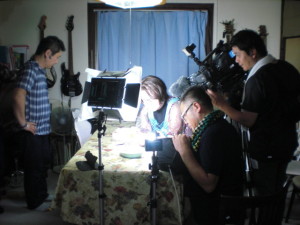Please allow me to share a bit of Japanese culture. 🙂
I suppose it all started with the earthquake in April. Some poor lady’s car was parked beneath a heavy object. The earthquake jiggled it loose, and the object fell on top of her car, denting the roof in a dimpled pattern.
My first lesson of Japanese culture is this: Many Japanese have a “throw-away” mentality. One of our friends got a small scrape on his year-old car, and he didn’t even think twice over his “need” to buy another one. In this earthquake case, the lady decided to get rid of her imperfect car with the dimpled roof.
My second lesson of Japanese culture is this: Cars must be inspected every two years. (I’m not sure if brand new cars need to be inspected this often since we’ve never had one.) Our small car needed to be inspected this month, so Norman took it to our mechanic. The auto guy gritted his teeth and gave us bad news: “It’s old. It has lots of kilometers (miles). And it needs work.” He could make it roadworthy, but he couldn’t guarantee it would make it until the next inspection. However, the good news he had was this: Some poor lady’s car had been dimpled in the earthquake, and he could sell it to us for a greatly reduced price! There was one catch (as it related to me). It is a manual transmission car. Stick shift. Normally, this wouldn’t be a problem. But in Japan it caused one for me.
My third lesson of Japanese culture: In order to drive a stick shift, you must pass your driver’s test, using a manual transmission car. The driving test is more challenging here, so when we first arrived in Japan, I opted to obtain merely a license to drive an automatic car. I suppose a fourth Japanese cultural point is the driver’s test here! If you merely show up and take the driving test, you must pay about $60 and drive through a mini-driving course (not on public roads). The real trick is that there are two courses (Courses A and B) which take different routes around the driving range. You must memorize all the twists and turns, as well as keep up with all the nuances they deem prudent for driving (like rolling down your window at railroad crossings to listen for an oncoming train). In my case, to lessen my stress, and since I hadn’t driven a stick shift in 15 years, I joined a short driving school. After practicing for four hours on their course, with careful instruction, I then could take the driving test. Only this time, the instructor would tell me where to turn instead of my need to memorize it.
Praise the Lord, I passed! It was a bit more expensive than taking a lone driving test (unless I failed it too often and had to keep retaking it), but now I’m the proud owner of a license that allows me to drive my dimpled, “new” car! 🙂





















